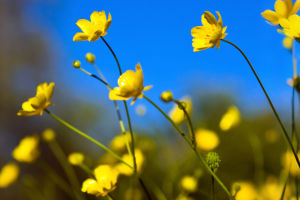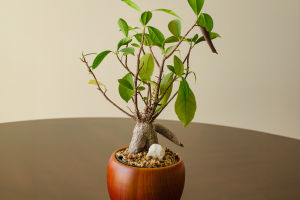We all know that tulips are among the most popular flowers worldwide, often associated with spring’s charm and beauty.
This fascinating flower, scientifically known as Tulipa gesneriana, belongs to the lily family and has captivated gardeners, botanists, and flower enthusiasts for centuries.
Originating from the Tianshan Mountains in China, the tulip is believed to have first appeared as a hybrid species between several wild varieties, including the Tulipa agenensis, Tulipa armena, and Tulipa suaveolens. Today, tulips are not only found in their native regions but also widely cultivated across Europe, Asia, and beyond.
A Brief History of the Tulip's Rise
The tulip's journey to global fame began in the late 16th century when it was introduced to the Netherlands. Due to the country’s unique climate, tulips bloomed at different times depending on the region’s latitude, generally between late March and early May. It was in the Netherlands where the tulip became so revered that it earned the nickname "magic flower" due to its extraordinary beauty and rarity.
For some, tulips became an obsession, so much so that people would bankrupt themselves to own the rarest tulip bulbs. This passion reached a peak during the infamous "Tulip Mania" in the 17th century. Over time, the tulip became synonymous with Dutch identity, even becoming the national flower of the Netherlands.
The Tulip's Global Appeal
While tulips are most famously associated with the Netherlands, their beauty has not gone unnoticed in other parts of the world. The flower has become a symbol of spring and renewal across many cultures. In Taiwan and Turkey, tulips are commonly used to decorate gardens, parks, and public spaces, contributing to their rich cultural heritage. The flower even appears on the national emblem and flag of Persia, where it symbolizes both beauty and the country’s historical ties to the plant. The tulip’s worldwide appeal speaks to its universal symbolism and timeless charm.
The Distinct Features of Tulips
Tulips are perennial plants known for their stunning, vibrant flowers. The plant’s bulb is typically round or egg-shaped, measuring about 2 cm in diameter, and is covered in a thin, brownish-yellow membrane. Each bulb contains the potential to produce a single, tall stem that can reach heights of 35 to 55 cm. The leaves, usually three to five in number, are long and narrow, with a smooth texture and a powdery coating. They emerge from the base or along the stem, adding to the plant’s elegant appearance.
The flower itself is equally impressive, ranging in size from 5 to 7.5 cm long. Tulip flowers come in various shapes, including cup, bowl, and bell forms, and they may be single or double-petaled. The color spectrum is equally diverse, with shades ranging from white, pink, and purple to red, yellow, and even orange. Some tulips even feature multicolored patterns, making them even more eye-catching. The tulip blooms from late March to early May, making it a true symbol of spring.
Varieties and Cultivars: The Endless Options
Tulips come in over 2,000 varieties, each with its unique characteristics, such as flower shape, size, and color. However, only about 150 of these varieties are widely cultivated for commercial production. Among the most well-known varieties are the Darwin hybrids, the Triumph tulips, and the Parrot tulips. The diversity of tulip cultivars ensures that there’s a variety to suit every gardener’s taste, whether they prefer classic single colors or striking multi-colored patterns.
In addition to the classic tulips we are familiar with, there are also species that produce particularly rare or unique flowers. For instance, the “black” tulips, which have deep purple petals, are highly coveted for their mysterious allure. Similarly, the frilled-edge tulips, also known as Parrot tulips, have dramatic, ruffled petals that resemble the vibrant plumage of a parrot.
How to Grow and Care for Tulips
Growing tulips is relatively simple, as long as the right conditions are provided. Tulips prefer well-drained soil and a sunny location, making them perfect for gardens or containers. Planting should take place in the fall, around September or October, when the bulbs have time to establish roots before the winter cold sets in. When planting, ensure the bulb is placed about 15 cm deep and 10 to 15 cm apart from others. This allows for optimal growth and flowering in the spring.
Tulips thrive in moderate climates, and while they can tolerate some cold, they should not be exposed to frost for extended periods. During the growing season, tulips require regular watering, but the soil should not be kept too moist. Once the flowers bloom, be sure to remove any faded flowers to prevent the plant from putting energy into seed production. After the flowers have died off, you can cut back the leaves, but it’s best to leave the bulbs in the ground to continue growing for the following year.
Why Tulips Continue to Captivate Us
The tulip’s magic is not just in its physical beauty but also in the emotions it evokes. Planting tulips in our gardens or receiving them as a thoughtful gift, they always symbolize new beginnings, hope, and the arrival of spring. These versatile flowers can be enjoyed in any setting, from small personal gardens to large public displays.
The timeless charm of tulips serves as a reminder of how nature brings beauty and joy into our lives year after year.
Lykkers, tulips aren’t just flowers—they represent fresh starts and renewal. What do they mean to you? Let’s share the joy of these stunning blooms and celebrate their lasting appeal!


